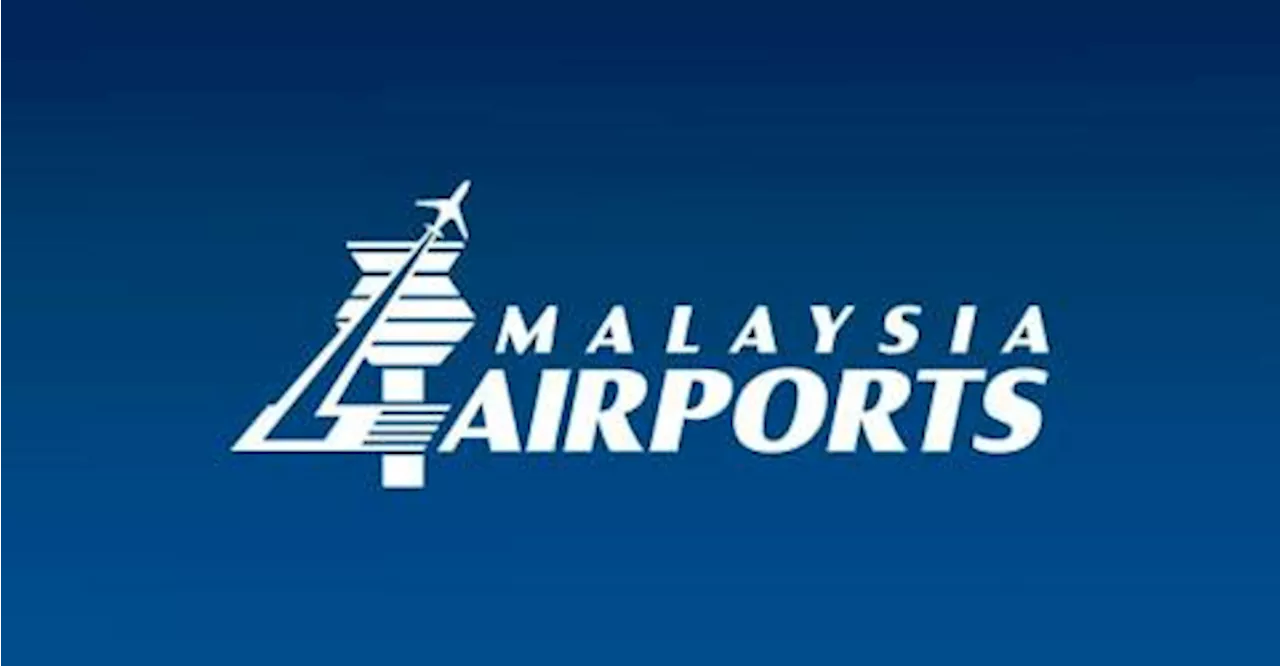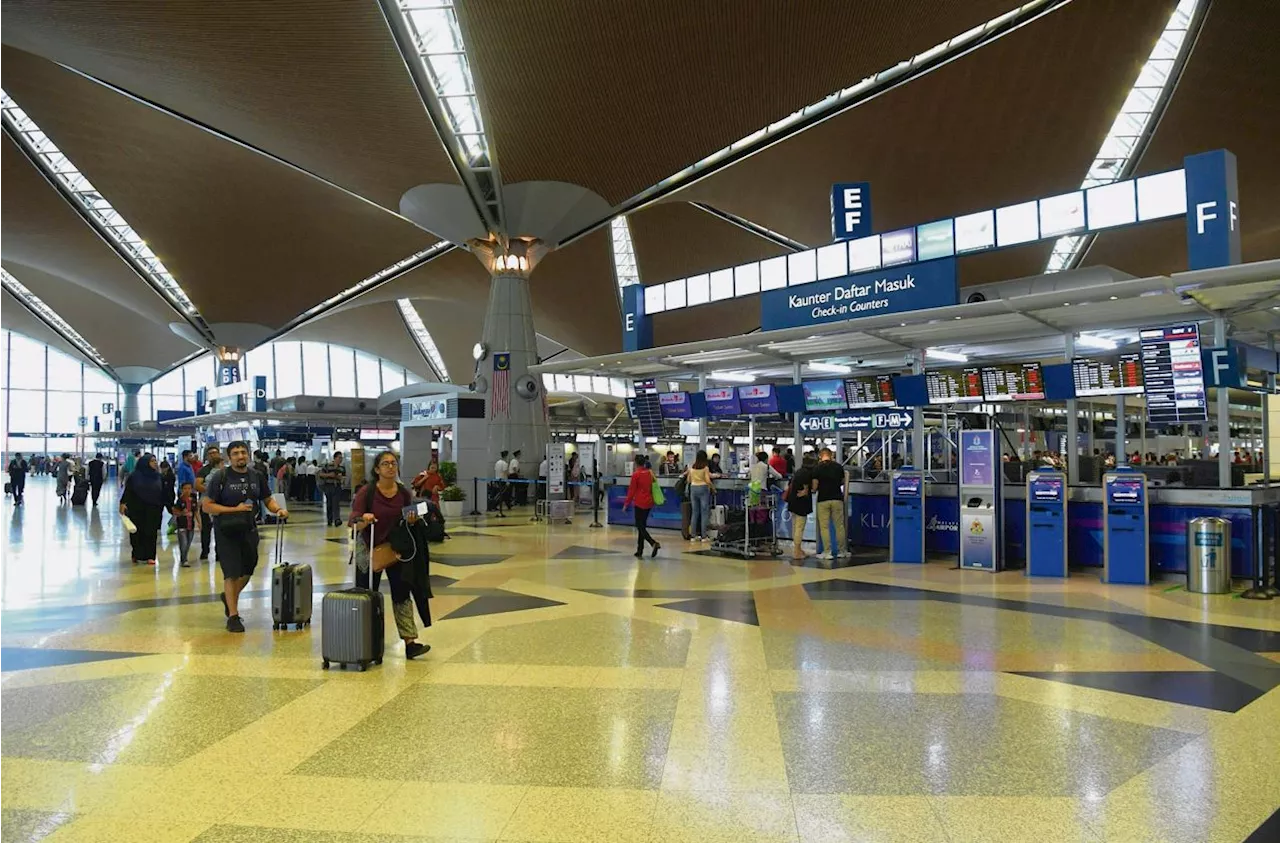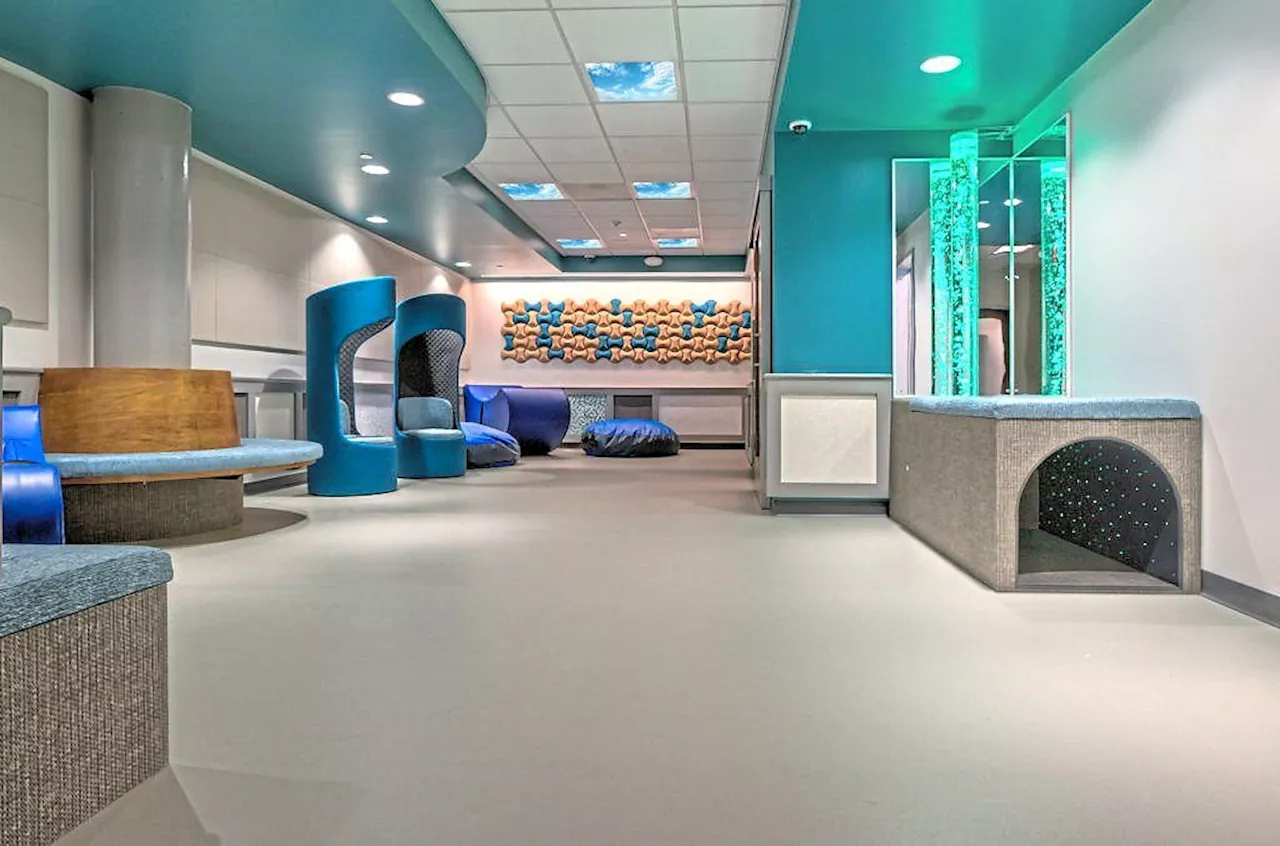The increasing number of sensory rooms in airports around the world reflects a growing awareness of the needs of neurodiverse travellers. These dedicated spaces provide a calming retreat from the often overwhelming sensory stimuli of air travel, offering a much-needed sense of peace and comfort.
Airports are a whirlwind of activity, with people rushing about dragging suitcases, non-stop announcements, and an overwhelming amount of information to process at a rapid pace. This travel experience can be particularly stressful for neurodiverse individuals, with those on the autism spectrum at a higher risk of sensory overload. Recognising this, an increasing number of airports are providing sensory rooms – designated areas of tranquility designed to alleviate some of the travel stress.
From airports in the United States like Pittsburgh (Pennsylvania) and Seattle (Washington) to Dublin in Ireland, this trend suggests these oases are highly valued by passengers. Pittsburgh International Airport states that its sensory room, Presley's Place, “offers a calming space for families to relax.” San Francisco (California) airport has also opened a similar facility. While open to everyone, the space was specifically designed for neurodiverse travellers and their families. It even features a replica of an aircraft interior to help travellers familiarise themselves with the environment. Seattle Airport created a space equipped with a rocking chair, dimmable lighting, and a starry night ceiling, aiming to provide “... a calming environment for those who may feel overwhelmed, overstimulated, or find the need to re-centre from the multitude of sights and sounds of the airport travel experience.” Dublin Airport, meanwhile, has built two sensory rooms to “... help calm passengers who might feel overwhelmed in busy and unfamiliar airport surroundings.” Passengers departing from the airport can use these rooms free of charge, with 60-minute sessions available through a booking system.However, globally, the number of airports offering these facilities remains relatively small. If you find yourself in need of peace and quiet, the most likely place to find it is in memorial and prayer rooms, which are generally open to travellers of any religious denomination. Many airports also offer additional support for individuals with non-visible impairments by issuing sunflower lanyards. These serve as a discreet indication for those affected to signal that they have an impairment that may not be immediately apparent, alerting airport staff and other travellers that they might require more time or assistance in certain situations. Kuala Lumpur International Airport also has its own Butterfly Effect initiative, catering to passengers with hidden disabilities like autism. According to KLIA’s official website, the Butterfly Effect is a theory describing how small changes can result in unpredictable consequences over time. “We believe that introducing autism-friendly facilities is a start towards creating a better experience for our special guests,” it states. The initiative features a Calm Room at Terminal 1 and several Sensory Walls at both terminals. The Calm Room is colourful and brightly lit, with some sensory-stimulating activity stations. The Sensory Walls are interactive touch panels that can “... help individuals with autism calm down through different types of tactile, visual and auditory play”. Passengers needing this service must pre-register online before visiting the Airport Care InfoCentre located at Terminal 1 (Level 5) or the Airport Information Counter at Terminal 2 (Level 3) to collect the “Butterfly kit”, which includes a special lanyard. This lanyard alerts airport staff to your needs and grants you access to priority lanes at security, immigration, and customs checkpoints. The same lanyard can be used for future airport visits; however, you'll need to register again. For more information, visit https://airports.malaysiaairports.com.my/
SENSORY ROOMS AIRPORTS NEURODIVERSITY AUTISM TRAVEL EXPERIENCE PASSENGER SUPPORT AIRPORT FACILITIES KLIA BUTTERFLY EFFECT
Malaysia Latest News, Malaysia Headlines
Similar News:You can also read news stories similar to this one that we have collected from other news sources.
 Thailand to Increase Dust-Proof Rooms in RestaurantsThailand's Health Department plans to expand the number of restaurants with dust-proof rooms to 20,000 nationwide within three months. The initiative aims to provide more dining options for people with health concerns amid recent severe PM2.5 pollution.
Thailand to Increase Dust-Proof Rooms in RestaurantsThailand's Health Department plans to expand the number of restaurants with dust-proof rooms to 20,000 nationwide within three months. The initiative aims to provide more dining options for people with health concerns amid recent severe PM2.5 pollution.
Read more »
 Malaysia Airports Directors Not Terminated, Contradicts Parliamentarian's ClaimMalaysia Airports Holdings Bhd (MAHB) clarifies that its independent directors have not been terminated, contradicting a statement by Machang MP Wan Ahmad Fayhsal Wan Ahmad Kamal. MAHB explains that these directors are not appointed on contract but are appointed and continue to serve on the Board of Directors. Any changes in the composition of MAHB's Board of Directors will be announced to Bursa Malaysia, as the company is a public listed entity. Wan Ahmad Fayhsal recently claimed to have received information that the directors' contracts had been terminated by Khazanah Nasional Bhd, the country's sovereign wealth fund, allegedly due to their objections to a proposed MAHB restructuring agreement. This issue follows an independent advisor from Hong Leong Investment Bank (HLIB) suggesting that shareholders accept an offer by Gateway Development Alliance (GDA) at RM11.00 per share. However, directors Datuk Mohamad Husin, Ramanathan Sathiamutty, Cheryl Khor Hui Peng, Datuk Seri Koe Peng Kang, and Chris Chia Woon Liat, have voiced their dissatisfaction, deeming the offer unfair and unreasonable.
Malaysia Airports Directors Not Terminated, Contradicts Parliamentarian's ClaimMalaysia Airports Holdings Bhd (MAHB) clarifies that its independent directors have not been terminated, contradicting a statement by Machang MP Wan Ahmad Fayhsal Wan Ahmad Kamal. MAHB explains that these directors are not appointed on contract but are appointed and continue to serve on the Board of Directors. Any changes in the composition of MAHB's Board of Directors will be announced to Bursa Malaysia, as the company is a public listed entity. Wan Ahmad Fayhsal recently claimed to have received information that the directors' contracts had been terminated by Khazanah Nasional Bhd, the country's sovereign wealth fund, allegedly due to their objections to a proposed MAHB restructuring agreement. This issue follows an independent advisor from Hong Leong Investment Bank (HLIB) suggesting that shareholders accept an offer by Gateway Development Alliance (GDA) at RM11.00 per share. However, directors Datuk Mohamad Husin, Ramanathan Sathiamutty, Cheryl Khor Hui Peng, Datuk Seri Koe Peng Kang, and Chris Chia Woon Liat, have voiced their dissatisfaction, deeming the offer unfair and unreasonable.
Read more »
 Passenger Count at Malaysian Airports Expected to Reach 146 Million by 2025Kenanga Investment Bank predicts a 11 percent rise in passenger numbers at Malaysian airports by 2025, driven by new airlines and services.
Passenger Count at Malaysian Airports Expected to Reach 146 Million by 2025Kenanga Investment Bank predicts a 11 percent rise in passenger numbers at Malaysian airports by 2025, driven by new airlines and services.
Read more »
 Malaysia Aims for Faster Privatisation of Airports to Boost Regional GrowthThe Malaysian Ministry of Transport (MoT) is pushing for a quicker privatisation of Malaysia Airports Holdings Bhd (MAHB) to accelerate investment and expansion in the country's aviation sector. Transport Minister Anthony Loke Siew Fook believes that MAHB's transition to a private entity will enable faster decision-making and capital expenditure (capex) allocation for airport development. The MoT supports a new model allowing airports to propose upgrades and expansions to the MoT, which then seeks Cabinet approval. This approach aims to address the challenge of funding airport expansions based on political influence and ensure a more sustainable and strategic approach to regional development.
Malaysia Aims for Faster Privatisation of Airports to Boost Regional GrowthThe Malaysian Ministry of Transport (MoT) is pushing for a quicker privatisation of Malaysia Airports Holdings Bhd (MAHB) to accelerate investment and expansion in the country's aviation sector. Transport Minister Anthony Loke Siew Fook believes that MAHB's transition to a private entity will enable faster decision-making and capital expenditure (capex) allocation for airport development. The MoT supports a new model allowing airports to propose upgrades and expansions to the MoT, which then seeks Cabinet approval. This approach aims to address the challenge of funding airport expansions based on political influence and ensure a more sustainable and strategic approach to regional development.
Read more »
 Malaysia Airports Enhance Connectivity with 5G In-Building SolutionsMalaysia Airports Holdings Berhad (MAHB) has successfully implemented 5G In-Building Solutions (IBS) at its Kuala Lumpur International Airport (KLIA) and KLIA2 terminals. This milestone signifies a significant advancement in connectivity and the digital experience for travelers. The 5G IBS installation, completed within two months, was activated on Friday during a ceremony involving DNB, EDOTCO, and MAHB. This collaboration aims to provide faster, more reliable connectivity throughout the airport, enhancing both passenger and operational efficiency.
Malaysia Airports Enhance Connectivity with 5G In-Building SolutionsMalaysia Airports Holdings Berhad (MAHB) has successfully implemented 5G In-Building Solutions (IBS) at its Kuala Lumpur International Airport (KLIA) and KLIA2 terminals. This milestone signifies a significant advancement in connectivity and the digital experience for travelers. The 5G IBS installation, completed within two months, was activated on Friday during a ceremony involving DNB, EDOTCO, and MAHB. This collaboration aims to provide faster, more reliable connectivity throughout the airport, enhancing both passenger and operational efficiency.
Read more »
 Malaysia Airports to Be Delisted After TakeoverMalaysia Airports Holdings Bhd (MAHB) will be delisted from the Main Market of Bursa Malaysia as its minimum public shareholding spread falls below 25%. The airport operator was taken over by a consortium led by Gateway Development Alliance Sdn Bhd (GDA), which now holds 95.11% of MAHB shares. The consortium plans to delist MAHB and compulsorily acquire the remaining shares.
Malaysia Airports to Be Delisted After TakeoverMalaysia Airports Holdings Bhd (MAHB) will be delisted from the Main Market of Bursa Malaysia as its minimum public shareholding spread falls below 25%. The airport operator was taken over by a consortium led by Gateway Development Alliance Sdn Bhd (GDA), which now holds 95.11% of MAHB shares. The consortium plans to delist MAHB and compulsorily acquire the remaining shares.
Read more »
